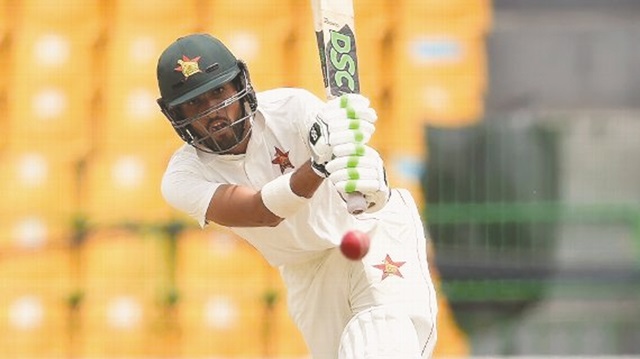Five, or four? The day-long debate continues

FROM the Dharamsala Test between India and Australia, which ran from March 25-28 this year, to the first Zimbabwe v Windies Test in Bulawayo, October 21-24, every single Test match played around the world had a result.
That’s 22 straight Tests with a winner and a loser. Bookended by a draw in Hamilton, between New Zealand and South Africa, and the second Zimbabwe-Windies Test, also in Bulawayo, last week.
The Hamilton game started on the same day as the Dharamsala Test, but had only 290.3 overs of play because of rain — it was interestingly poised, with South Africa in danger at 80 for 5 in their second innings after conceding a 175-run first-innings lead. Had rain not intervened, we might have had 23 straight results, after the pretty pure draw in Ranchi between India and Australia earlier and the equally credible stalemate in the last Bulawayo game.
If 22 straight outright wins — or losses, depending on where you’re looking from — is dramatic enough, here’s more: In 37 Tests through 2017 so far, we have had only four draws. That’s 33 results. Another one: The first nine Tests of the year had results too, and rounded off a train of 20 non-draws. Hobart, November 12 to 15, 2016, Australia v South Africa to Galle, March 7 to 11, Sri Lanka v Bangladesh. That makes it 44 results in the last 48 Tests.
We probably didn’t need to be told this — the fact that most Test matches these days end in wins and losses and the charming old draw is an almost a forgotten thing. But putting numbers down adds a sense of story to the whole phenomenon. Like there’s a mystery and all the clues are set out on a table like a deck of cards, face up.
Oh, and another clue: Of the 22 results in the last streak, nine ended inside four days and four within three. That means only nine went into the fifth day.
Of the four that ended just over halfway in, we had a very poor Sri Lanka hosting a very strong India, a usually poor Windies on tour of England, and poor-abroad Bangladesh in South Africa. And oh, in the fourth round of the Ranji Trophy matches — four-day first-class affairs — that got over last week, we had ten out of the 12 matches ending in results and, wait, all the results came on the final day.
Add it all up, x and y and z, and it would seem that y —four — is the ideal duration for a Test match in its present low-staying-power, quick-scoring avatar.
It’s been one of the hot topics of discussion in recent times, as everyone knows, with old-timers and pretend-old-timers — like myself — holding out for the sanctity of this little bit of how-it’s-always-been. But if most Tests get over in three or four days and only some get to five, the suits will sell it for four, they will. Doubtful? Will you bet good money that the first trial four-day Test, the Boxing Day thing between South Africa and Zimbabwe, will go into five days?
Looking at the batting line-ups on the two sides of the great divide at the Ashes, I don’t see too many of those Tests going into five days either.
That’s kind of unfortunate, because Test matches should be for five days. Period.
But, and it’s a depressing point to make: my greatest reason for loving Test cricket suggests four-dayers is a better deal than five-dayers.
The reason? The draw. The good old draw. The one thing, the only thing, that distinguishes Test cricket from all other sport. The fact that after five days of bat and ball, and swings of the pendulum, everyone can go home without a winner and a loser in what may well have been a scintillating match.
When people of my generation, and certainly most generations before that, took to Test cricket — and therefore cricket itself — the draw was de rigueur.
Most Tests ended with captains shaking hands after a battle well fought and shaking their heads at a battle not won. If you fell in love with the game at all, the draw had to be a big part of the attraction.
“Isn’t it wonderful, that you can play a game for five days and then not have a winner or loser? You can just be at the ground and read a book and have a grand time. No real competition,” a wise person — my wife — told me during our courtship days. I was, at the time, educating her on cricket, and football and boxing, and she liked the idea of Test cricket the most. No blood, no gore, no shorts or bare torsos, no winner; “why does someone have to lose anyway?”
Wise but sports illiterate she is, but not only do I get what she means, I subscribe to the sentiment entirely.
Think the two tied Tests. In my cricket-watching life, there was the wonderful Test between Zimbabwe, then a team at par with some top-tier units today, and England in Bulawayo back in 1996 — I didn’t see it, but waited for the reports in the newspapers with bated breath. It ended with England needing 205 to win in 37 overs, then 11 in the last over, and then three off the last ball, and ended with honours even after a run out, of Nick Knight.
How about the time James Anderson and Monty Panesar, in a mini-battle for the No. 10 batting slot, held off the Australians forever in Cardiff in 2009? Or the AB de Villiers and Faf du Plessis stonewalling act in Adelaide in November 2012? In 2014, when Nuwan Pradeep fended off the last five Stuart Broad deliveries to give Sri Lanka a draw at Lord’s in 2014?
Maybe because of the quality of Test batsmanship, could be the Twenty20 effect, perhaps the pitches … the fifth day is taking away the possibility of more draws; even the fourth day gives us far too many results. So how should it go? I want five-day Tests and draws — can the two co-exist? — Wisden India.








Comments